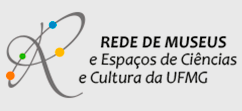
Extended Phenotypes Of The Associated
Organisms
Autoria e Infos
Bruno G. Ferreira et al
Contato:
Lattes:
Abstract
Animal-induced galls are considered extended phenotypes of their inducers, and therefore plant morphogenesis and metabolism may vary according to the species of gall inducers. The alterations in vacuolar and apoplastic polyphenols, carotenoids, chlorophyll fluorescence rates, PSII quantum yield, and phospholipid peroxidation were studied in galls induced by Ditylenchus gallaeformans (Nematoda) on Miconia albicans and M. ibaguensis (Melastomataceae), and by an unidentified Eriophyidae (Acarina) on M. ibaguensis. The focus currently addressed is gall metabolism as the extended phenotype of the gall inducers, and the neglected determination of gall functionalities over host plant peculiarities. Galls induced by D. gallaeformans on M. albicans and by the Eriophyidae on M. ibaguensis have increased accumulation of apoplastic and vacuolar phenolics, which is related to the control of phospholipid peroxidation and photoprotection. The galls induced by D. gallaeformans on M. ibaguensis have higher carotenoid and vacuolar polyphenol contents, which are related to excessive sunlight energy dissipation as heat, and photoprotection. Accordingly, antioxidant strategies varied according to the gall-inducing species and to the host plant species. The distinctive investments in carotenoid and/or in polyphenol concentrations in the studied galls seemed to be peculiar mechanisms to maintain oxidative homeostasis. These mechanisms were determined both by the stimuli of the gall-inducing organism and by the intrinsic physiological features of the host plant species. Therefore, the roles of both associated organisms in host plant-galling organisms systems over gall metabolism is attested.
Key-words: Metabolismo Antioxidante, Organismos Associados, Poda Induzida, Botânica




